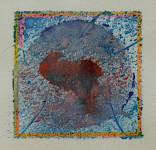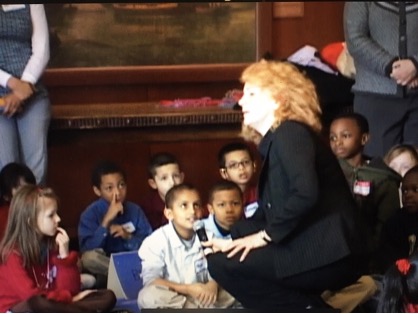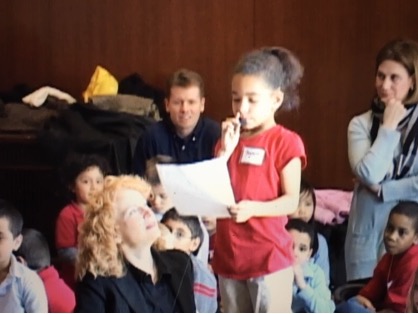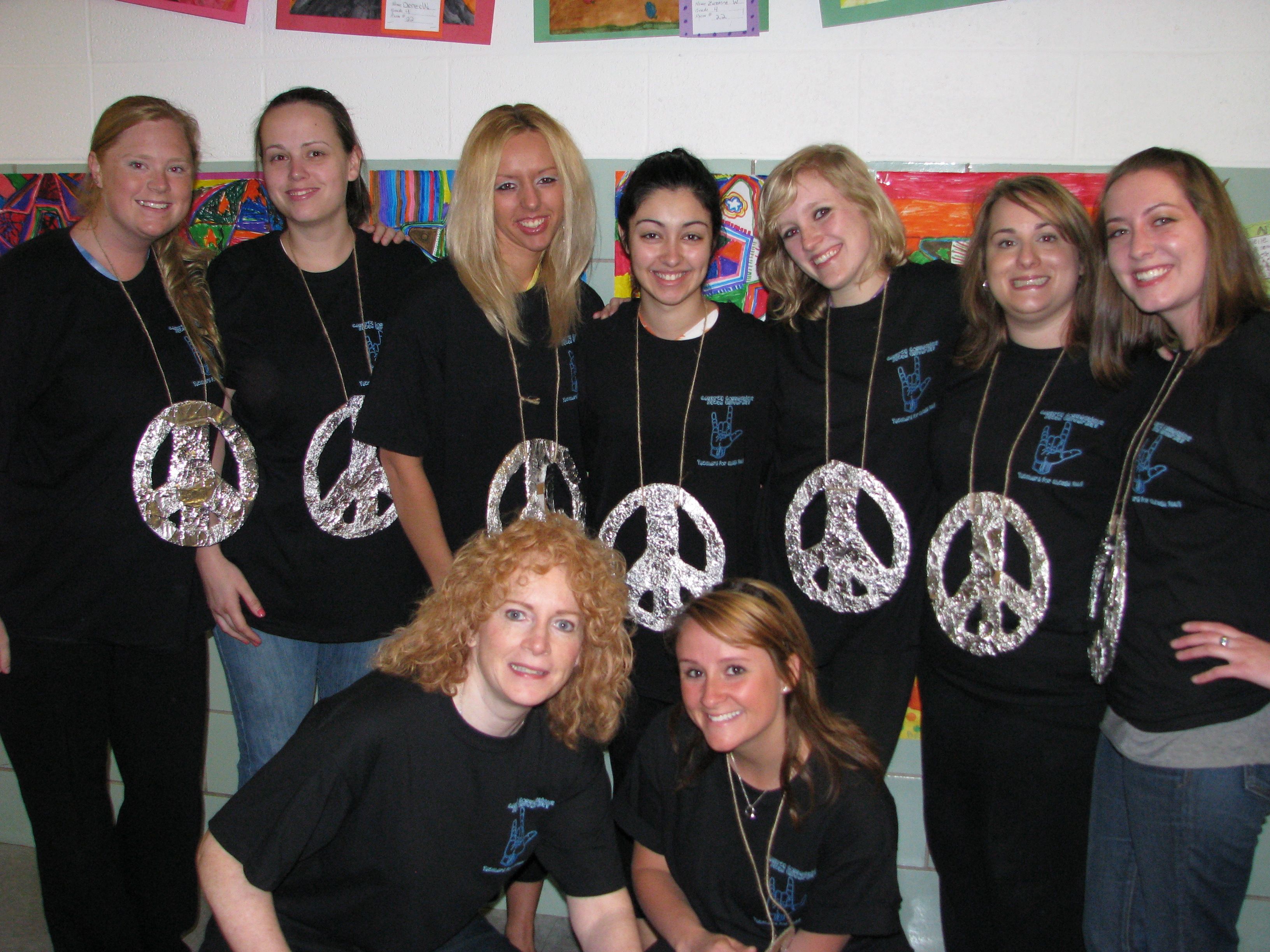The Seed of Love

Painting by Barbara Clark, 2009, Photo by Roy Temple
Aesthetic Education Program Models: The Fire is Burning in Me


A Landscape of Thinking: The Storytelling of Personal Narratives in Relationship to a Masterpiece (2009)
Clark, B. A. (March, 2009). A Landscape of Thinking. Inter-district partnership mural presented in UMC New Britain Collaborative on the Cutting Edge: University, Museum, Community, Collaborative: New Britain Museum of American Art.
A Landscape of Thinking: The Storytelling of Personal Narratives in Relationship to a Masterpiece, explored the development of children’s writing stories within the context of a museum environment. The purpose of this research was to establish a partnership with two art teachers in local urban and suburban elementary schools to develop curriculum that connects visual art to storytelling or writing personal narratives by second grade students in their art classes. Working with art teachers we reflected on the following question; How do settings or landscapes inspire artists and writers to create stories? Over a period of six weeks Dr. Clark taught art classes in the specific schools modeling for the art teachers how to develop visual thinking methods to study the storytelling through a masterpiece. The art teachers in their art classes then implemented the instructional methods developed.
Participants included teacher candidates, classroom teachers and second grade students from an urban and suburban elementary school. Additional meetings with the principals and teachers took place to present the inter-district project. Dr. Clark presented a series of aesthetic mini lessons promoting sensory language, reflective thinking, and creative writing. This culminated with the second graders from the local urban and suburban schools meeting for the first time at the New Britain Museum of American Art for a museum exploration with great works of art. Each child was given a journal and worked in small groups drawing and writing poetry. Finally, all second graders united and had a grand celebration sharing stories and art.

A Landscape of Thinking (2009)

Comic Book Characters Come Alive, Grade 3, Graphic Novel Series (2018)
French, J.J. (Spring, 2018). Comic Book Characters Come Alive: Graphic Novel Series & Film
Literacy Unit. Twelve Week Aesthetic Education Workshop & Compassionate Community
Celebration. Hearts & Minds Without Fear Arts in Education with CCSU Elementary Education
Students & Grade three Team Children & Teachers, Wolcott Elementary School, West Hartford,
CT.
French, J.J. (Spring, 2018). Timelines Toward Tomorrow: Integrated Social Studies & Literacy
Graphic Novel Unit. Twelve Week Aesthetic Education Workshop & Compassionate
Community Celebration. Hearts & Minds Without Fear Arts in Education with CCSU
Elementary Education Students & Grade Five Classroom, Emerson Williams Elementary School,
Wethersfield, CT.
Clark, B. A. & French, J.J. (Spring, 2017). Books Brought To Life: The Day The Crayon’s Quit
& Came Home. 8 Week Aesthetic Education Workshop & Compassionate Community
Celebration. Hearts & Minds Without Fear Arts in Education with CCSU Elementary Education Students & Grade One Student & Teacher Classroom, Holmes Elementary School, New Britain, CT.s
Clark, B. A. (April, 2010). CCSU Artist & Writers Studio Welcomes First Achievement Children.
Presented with CCSU elementary education students to parents, teachers, and community
members, and fifth and sixth graders from First Achievement Magnet School: Barnard Hall,
CCSU.
Clark, B. A. (October, 2006). Action Research: Aesthetic Methods for 2nd Grade Writing and Art.
Presented to 2rd Naylor School grade teachers and their children: Hartford CT.
The seed of love grows through the imaginative interplay of the other seven seeds. Each seed is symbolizing the unmasking of the sacred imaginative realm within each one of us so that in turn we might envision a new landscape of learning. Love in action is especially vibrant when teacher candidates explored compassionate action for homelessness and their sense of social responsibility.

Symbolic
messages were presented through the
voice of storybook characters
familiar to children. Children are
drawn to imaginative characters and
invited into the discussion and the
endless possibilities of revealing
love in action as modeled by the
characters. Messages of love are
embodied in the storybook character
selected by the teacher candidates
to depict a new face of
homelessness. The video clip is a
segment of the school community
performance for 300 children titled,
Creating a Compassionate Community
to End Homelessness. The teacher
candidates stated that their message
to the children in the school
audience promoted the modeling of
acts of love by creating a chain of
compassion within a school
community. The teacher candidates
represent a busy world not noticing
or stopping to help homeless people,
running in mindless patterns. The
teacher candidates represent this
through a pattern of clapping until
the whistle blows and time stops. A
moment of time is captured as if in
a still life the scene freezes. The
busy cacophony of the street is a
moment in time now focused on a
person in need as the world stops
spinning all the people lower to the
ground and freeze. This symbolic
representation exhibits how these
loving acts of kindness may
ultimately impact the larger world
community.
Pre-service teachers’ exposure to
critical aesthetic educational
pedagogy, enacted through community
engagement, increased their
citizenship opportunities to unite
socially, empathically, cognitively,
and spiritually for the greater good
of their immediate and local
community partners. Vincent van Gogh
(1880) strove throughout his life as
an artist to create a community of
artists. During his struggle and
need for love within a community he
expressed his thoughts on love in a
letter to his brother:
One cannot always tell what it is
that keeps us shut in, confines us,
seems to bury us, but, however, one
feels certain barriers, certain
gates, certain walls. Is all this
imaginative fantasy? I do not think
so. And then one asks: “My God! Is
it long, is it forever, is it for
eternity?” Do you know what frees
one from this captivity? It is every
deep serious affection. Being
friends, being brothers, love, that
is what opens the prison by supreme
power, by some magic force.
Teacher candidates participated in
an aesthetic education partnership
between the arts and community
members that invited inclusion and
participation for diverse learners,
including those with special needs.
Teachers who have a vision of their
classes as compassionate communities
are more likely to promote social
justice and build upon their
students’ strengths to facilitate
transformative thinking. Through the
imaginative core when touched,
through aesthetic and compassionate
creative commons education we are
lifted to see and possibly love one
another and walk towards the light,
hand-in–hand, to what might be a
better place for all.
“A spiritual practitioner who has gained a certain degree of realization as a result of his or her long practice should not rest content. Instead, this practitioner should set out and attempt to communicate it to others, so that they too can share in the experience. Since the essence of all spiritual practice is the practice of love, compassion, and tolerance, once you have had a profound experience of these it is natural that you should with to share it with others” (Dalia Lama, 1998, p. 95).
All references
to outside sources can be found in
the bibliography sections of our
published work.